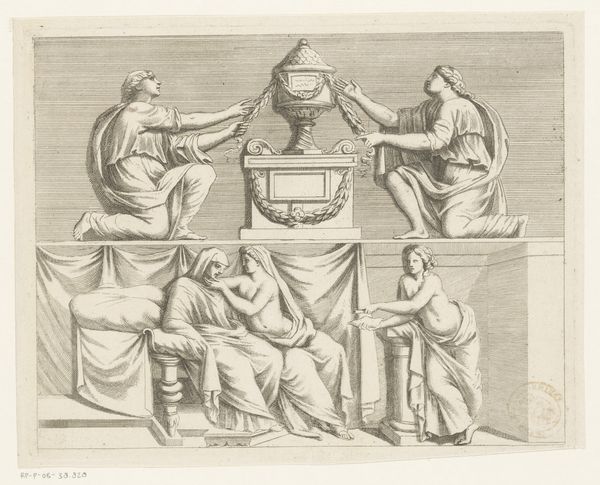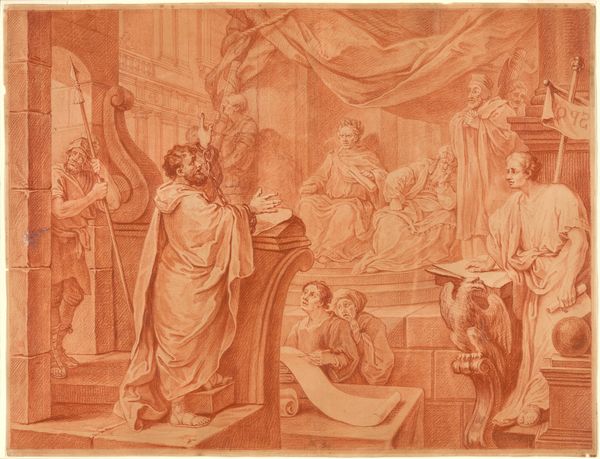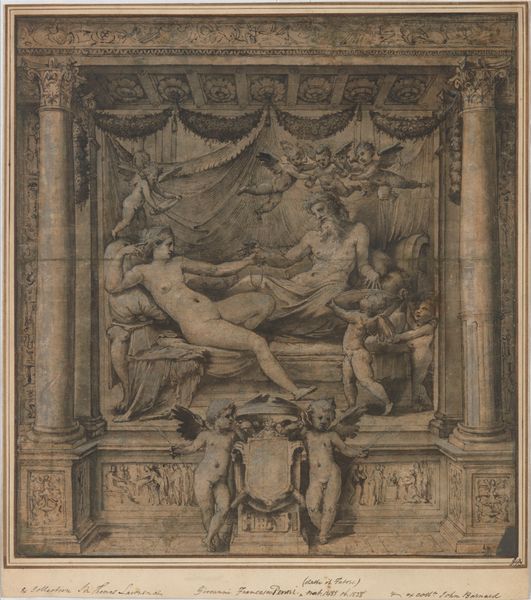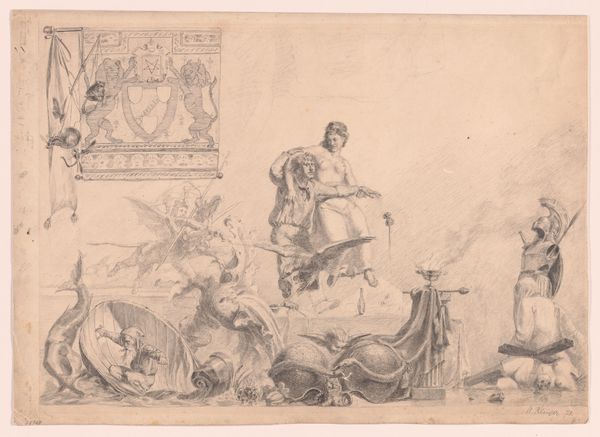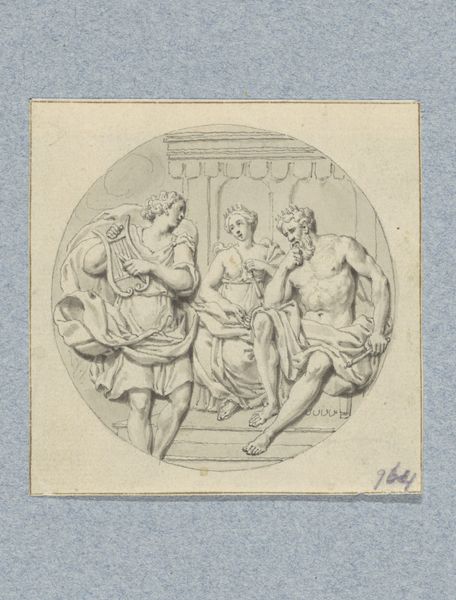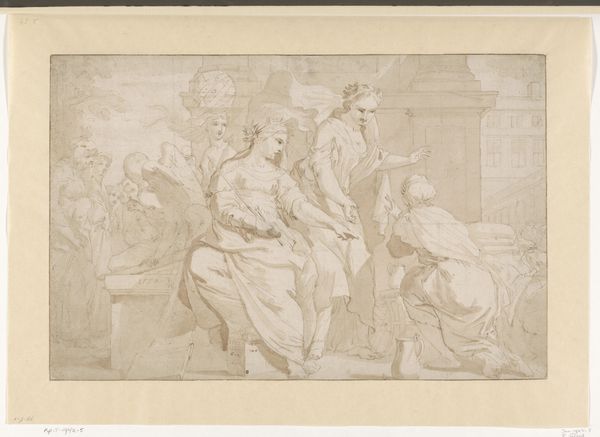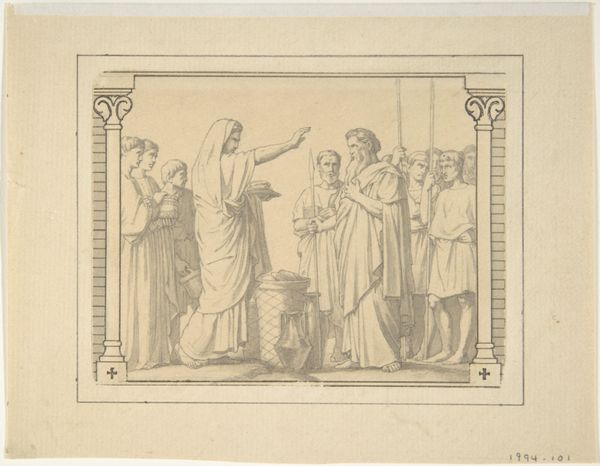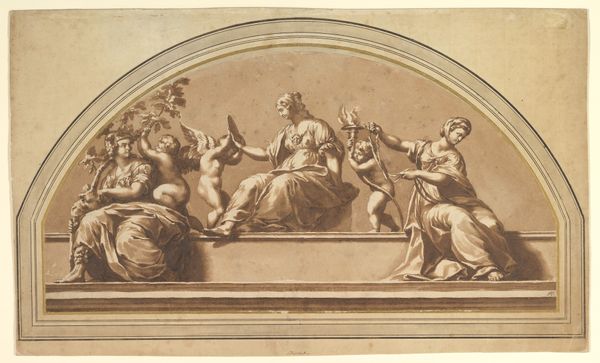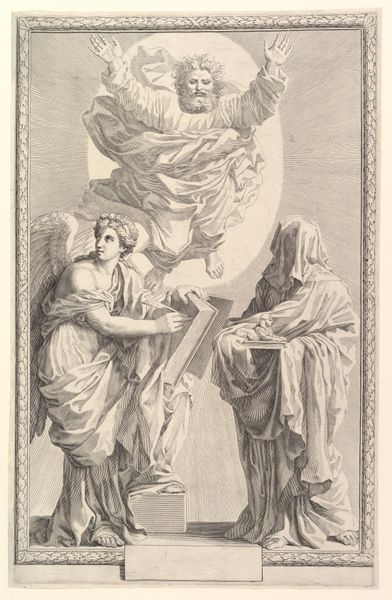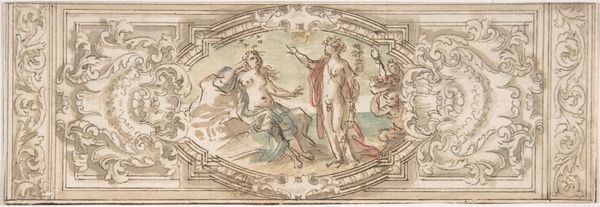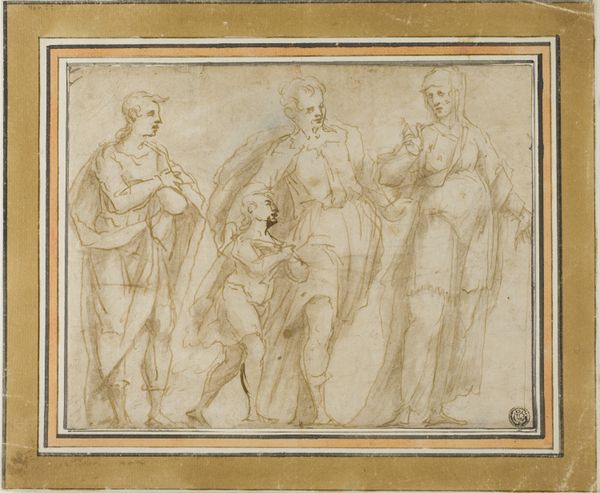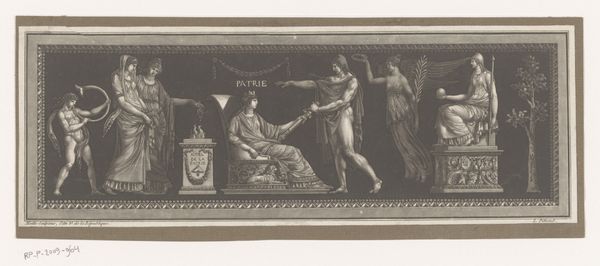
Design for a Frieze with Two Women Flanking an Urn 1775 - 1785
0:00
0:00
drawing, print, paper, ink
#
portrait
#
drawing
#
neoclacissism
#
toned paper
#
allegory
# print
#
classical-realism
#
figuration
#
paper
#
form
#
female-nude
#
ink
#
classicism
#
line
#
history-painting
Dimensions: 13-1/4 x 19-5/16 in. (33.6 x 49.0 cm)
Copyright: Public Domain
Curator: This ink and wash drawing, likely from the late 18th century, is titled "Design for a Frieze with Two Women Flanking an Urn," attributed to Giuseppe Cades. It feels distinctly neoclassical. What are your first impressions? Editor: It has an overwhelming atmosphere of…contemplation. I’m struck by the somber tone despite the classical idealism. It feels muted, almost melancholic. Is it meant to depict mourning? Curator: It's more likely alluding to concepts of memory and idealized beauty through its arrangement of symbols. Urns, of course, carry immense symbolic weight, frequently related to remembrance of the dead, but the flanking figures are allegorical. Consider the snake draped around the urn--potentially suggestive of prudence. Editor: I do note the serpents, though I can't shake the rather stagnant composition. Those draped figures appear somewhat bored, leaning almost listlessly on the urn. Given the context, is it fair to interpret their poses as symbols of mourning, but in a very controlled, socially acceptable mode? Who were these figures meant to represent? Curator: Absolutely, that's a plausible reading, aligning with the restrained emotions valued in Neoclassical art. As for the figures’ identities, their robes, headdresses, and stance, signal virtuous women embodying specific virtues, reflecting the values of that era. But, of course, Cades left little information. Editor: Virtuous perhaps only by classical European standards! The winged female figure standing over the orb could signify worldliness, or divine intervention. Either way, these are gendered representations that we have to examine carefully; the female body being burdened or glorified for patriarchal moralizing! Is that how these symbols resonated at the time, or is there evidence of dissenting voices? Curator: During that period, these classical figures, idealized women in particular, largely reinforced existing hierarchies, though the use of allegory also offered some capacity to subtly critique the status quo. Whether Cades intended that…that remains largely indecipherable. Editor: So much history encoded into relatively simple symbolic representation. The emotional weight of the piece—melancholy or even suppressed grief—becomes connected to power dynamics of gender. Curator: Precisely. What initially seems like an image of austere, distant beauty yields complex perspectives on remembrance, gender and symbolic language. Editor: Yes, seeing beyond that austere beauty certainly reframes the whole composition and forces me to reassess what this frieze might have meant, and means now.
Comments
No comments
Be the first to comment and join the conversation on the ultimate creative platform.
